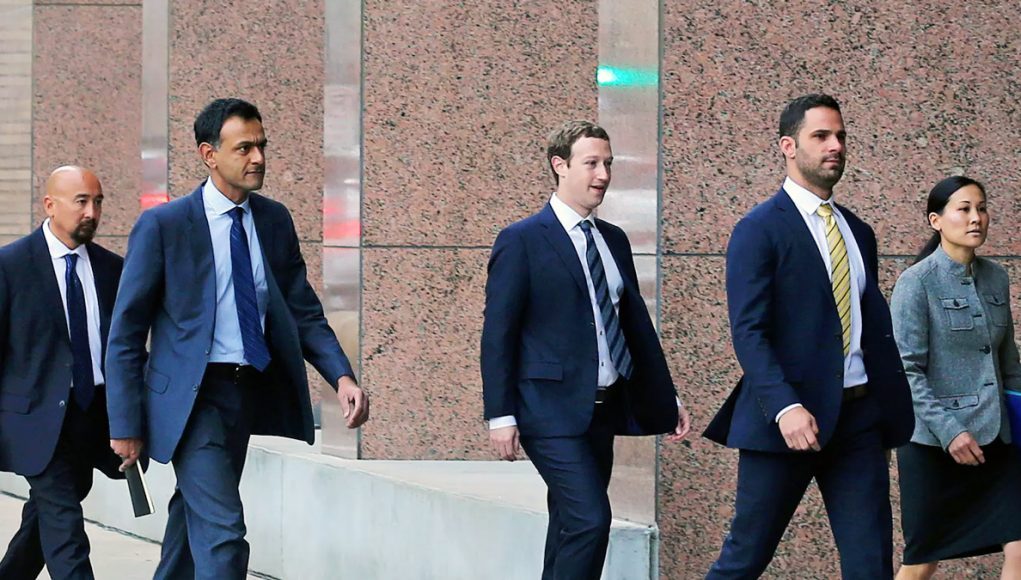This week the eyes of the virtual reality industry are on a federal court in Dallas, Texas where ZeniMax (and child company id Software) and Facebook (and child company Oculus) have been engaged in legal battle over a dispute which could cost Facebook $4 billion. ZeniMax alleges that a former employee used VR code that it owned after being hired by Oculus, and further that Facebook should have known that the code was ZeniMax property. With jury deliberations now starting, a verdict could come as soon as today. Here’s what you need to know about the case.
 Guest Article by Brian Sommer, IME Law
Guest Article by Brian Sommer, IME Law
Brian is an interactive media and entertainment attorney at IME Law, where he focuses his practice on the intersection of traditional entertainment and immersive media. He also serves as Co-Chair of the VRARA Licensing Committee. You can follow Brian on Twitter @arvrlaw, and @IME_Law.
Update (2/1/17, 2:45PM): The verdict in the case has been reached, awarding $500 million to ZeniMax. Details here.
For 13 days, attorneys in the Dallas federal court have been selling the jury very different stories. “One of the biggest technology heists ever” is how ZeniMax attorney Tony Sammi described to jurors Facebook’s acquisition of Oculus in opening statements.╫ In Thursday’s closing arguments, Oculus attorney Beth Wilkinson told jurors ZeniMax and Id Software are “jealous, they’re angry and they’re embarrassed” over the success of Oculus and the acquisition by Facebook.╫
At first blush, this lawsuit appears to be a complicated mess involving two plaintiffs, five defendants, nine causes of action, over 900 court filings (many sealed from the public) and a demand for more than $4 billion in damages. Without having access to many of the critical motions filed in the case (due in part to the Court’s order sealing such filings), it is not possible to assess in exacting detail certain critical arguments made by each side. But, from arguments, publicly-available filings and reports that have been made available to the public, it appears that the essence of the lawsuit can be distilled down to this: this is a dispute about who owns the intellectual property (“IP”) that was vital in creating the Oculus Rift.
Will the jury agree with ZeniMax that its proprietary computer code was a foundational component of Oculus’ success, or will the jury side with the defense’s argument that Oculus code was developed independently and based upon publicly known code and different solutions?
Starting today, jurors begin sorting through hundreds of facts and applying them to the issues contained in the jury instructions, weighing the credibility of witness testimony and evidence presented. Here are three key issues that could drive jury deliberations:
1. Did Palmer Luckey and Oculus Misappropriate IP That Zenimax Disclosed Through a Nondisclosure Agreement?

Defendant John Carmack is heralded as one of the most recognized and accomplished video game programmers and virtual reality engineers in the industry today. He co-founded Id Software (plaintiff), which was later acquired by ZeniMax (plaintiff). In April 2012, while employed as Id Software’s Technical Director, Carmack discovered through an Internet forum that Palmer Luckey (defendant)—who would go on to become the founder of Oculus—had developed a prototype virtual reality headset called the “Rift.” Carmack contacted Luckey, and Luckey sent Carmack a very early Rift prototype. Carmack is alleged to have immediately started to evaluate, analyze and modify the Rift prototype using research, software code and tools owned by id Software.
Carmack and Luckey’s friendship quickly turned business-like by May 2012 when Luckey in his personal capacity signed a nondisclosure agreement (“NDA”) with Id Software’s parent company ZeniMax, according to information from the case.
Companies use NDAs to ensure ideas or trade secrets disclosed to another party remain confidential. NDAs usually prohibit the recipient of confidential information from using or disclosing any information that they receive under the NDA, except for agreed purposes. Since an NDA is a contract, all of the legal principles surrounding contract law (e.g., elements needed to form a contract, defenses, etc.) are used to analyze an alleged breach of an NDA.
In June 2012, Luckey formed Oculus on the heels of successful demonstrations by Carmack (employed at the time by ZeniMax) and Luckey at the E3 Convention. ZeniMax alleges that through early 2013, and while bound by the NDA, Carmack and other Id Software employees collaborated with Oculus and Luckey to debug and refine the Rift.
ZeniMax alleges Luckey breached the NDA by taking ZeniMax-owned proprietary information and then using it without permission and disclosing it to Facebook. Oculus and Luckey contend the NDA is unenforceable for a number of reasons, including because the NDA was signed by Luckey in his personal capacity before Oculus was founded, a key material term was never defined, and for other legally nuanced reasons. In response, plaintiffs assert that Oculus is bound by the NDA because Oculus is a mere continuation of Luckey’s prior work. The jury’s outcome may hinge on the many factual findings related to the NDA.







